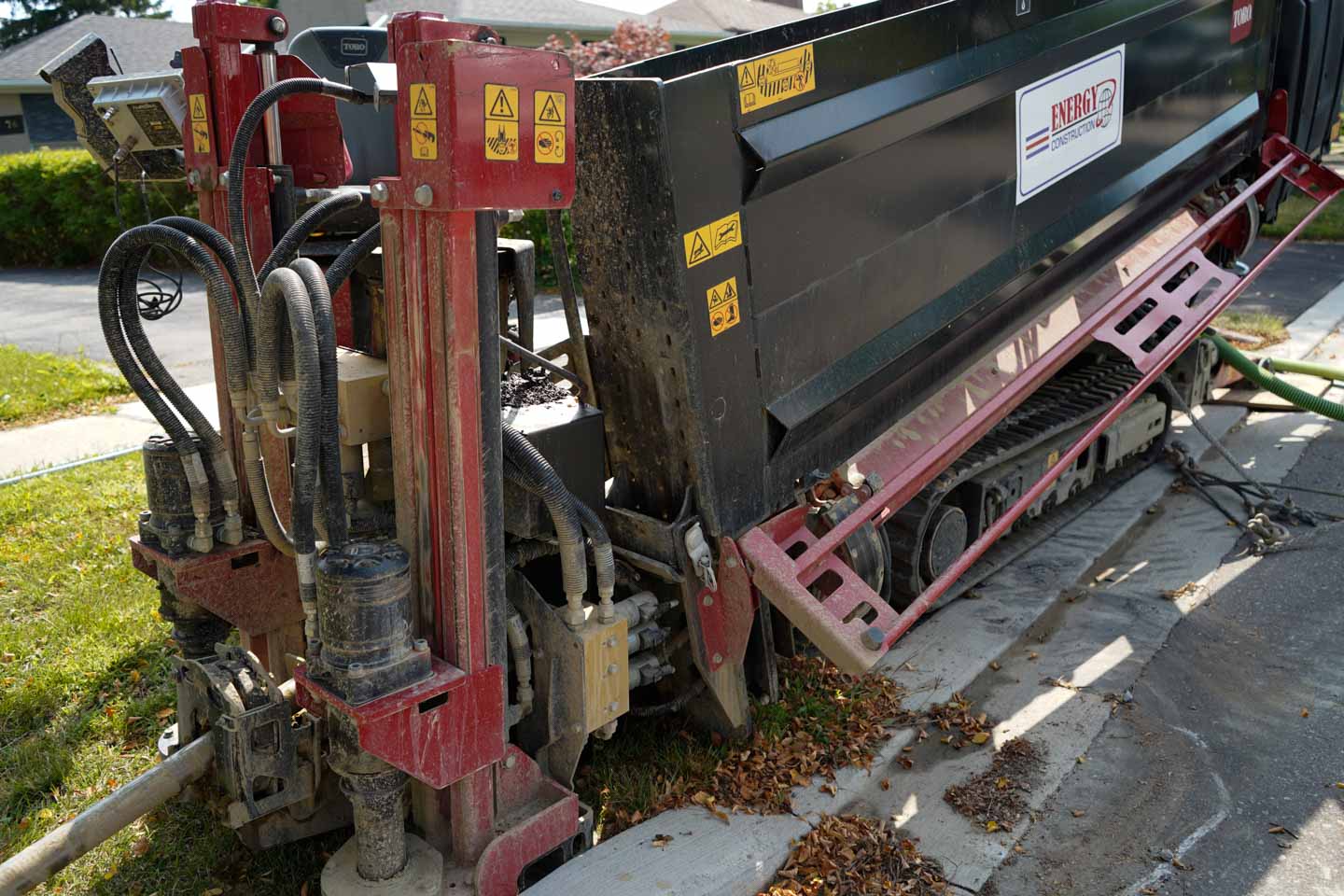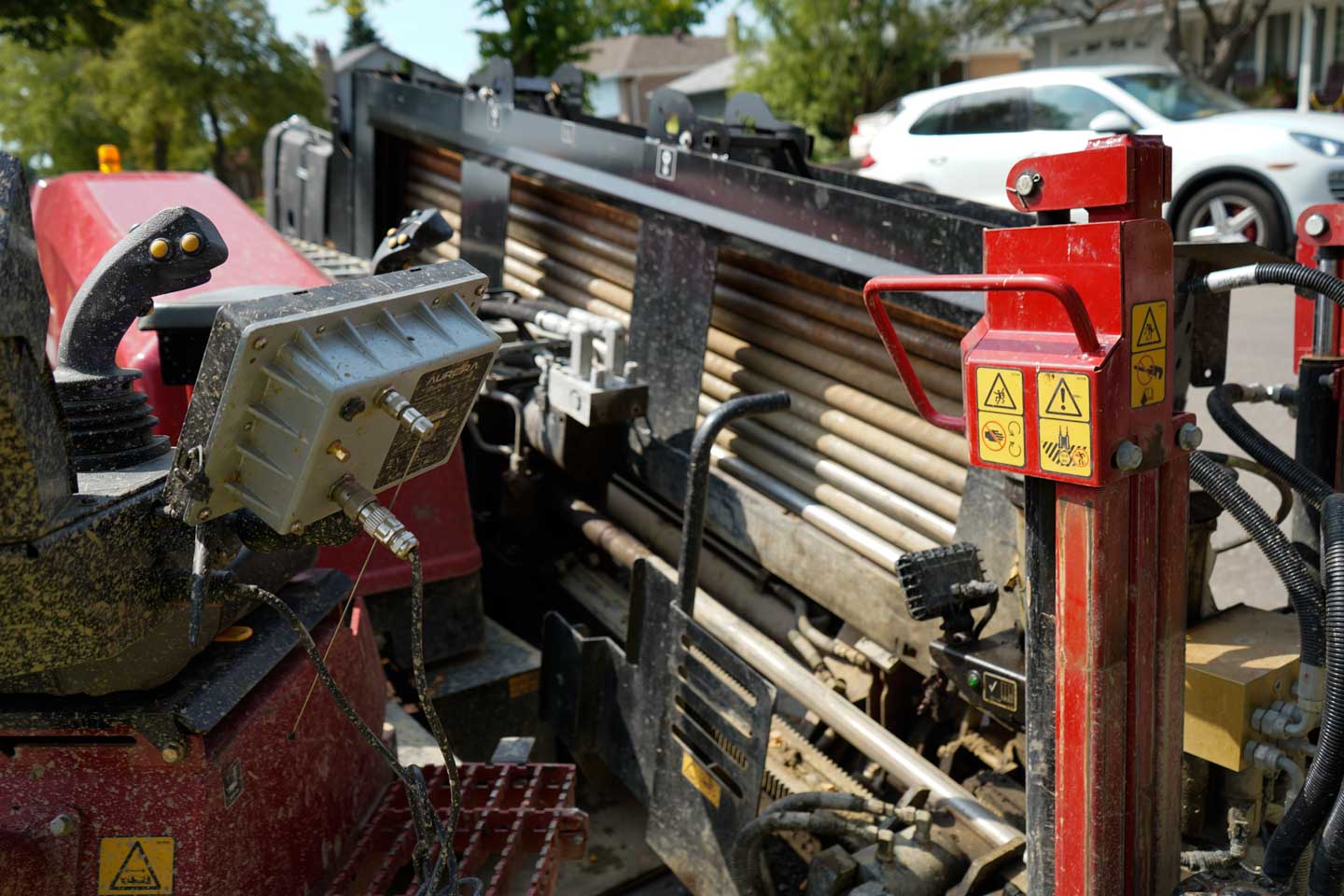Horizontal Directional Drilling
Horizontal Directional Drilling is a process of installing conduits under obstacles such as roads, buildings, and wetlands without damaging existing municipal infrastructure and without interrupting traffic.
There are many types of conduits that can be installed, these include fiber, electric and gas.
Drilling commences by pushing and rotating a pipe connected to a drill bit along a predetermined path. Water is pumped to the drill head to help with the removal of drill cuttings and to also assist with drill cooling and lubrication.
On the surface, a locator gathers radio signals sent by the drill bit who then determines the exact location and depth of the drill and provides steering recommendations to the drill operator. This process is extremely difficult and usually only to be completed by true professionals.
Once the drill has successfully surfaced at the end of the drilling path, the conduit is attached to the drill head and pulled through the drill path in reverse, allowing it to be installed.
Prior to drilling, it is essential that the area has been properly located to identify any points of conflict for the proposed drill path. It is also important that utility hydrovac daylighting is done to non-destructively uncover these conflict points. If proper preparation is not carried out, enormous amounts of costly damage can occur in the event that the drill hits existing utilities. This is one of the biggest risks during the drilling process.
Directional drilling can be extremely expensive if equipment is damaged by inexperienced staff and hard soils or rocks. Considering that pre-existing utilities may be installed underground, such as electric and gas, this process can be extremely risky without proper digital maps, accurate locating, and hydrovac daylighting.



